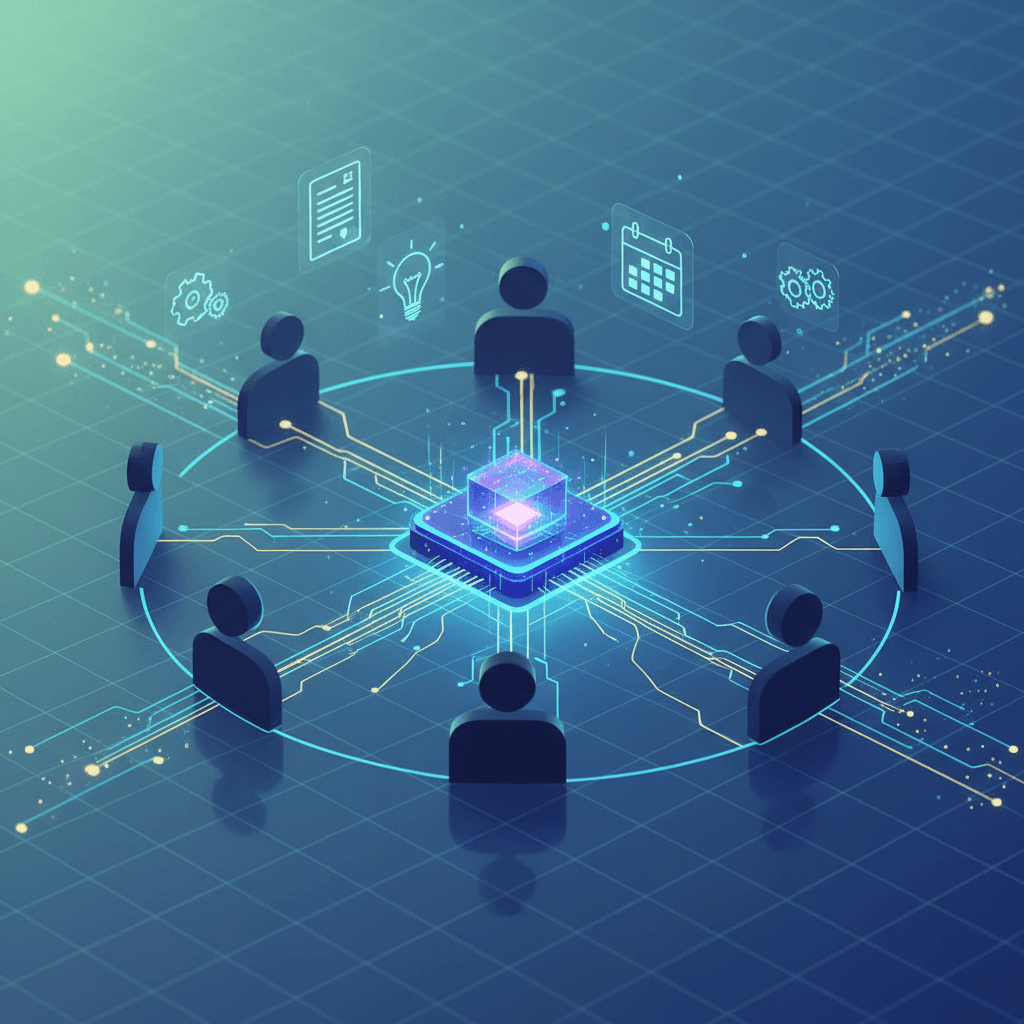OpenAI Launches ChatGPT Group Chat, Revolutionizing Collaborative AI.
From personal assistant to group collaborator, ChatGPT revolutionizes teamwork and social interaction by becoming an active participant.
November 14, 2025

In a significant move that blurs the lines between conversational AI and collaborative platforms, OpenAI has begun testing a group chat functionality within ChatGPT. This pilot program, initially rolled out in Japan, South Korea, Taiwan, and New Zealand, allows multiple users to interact with the AI assistant in a single, shared conversation, signaling a strategic push towards transforming ChatGPT from a personal tool into a collaborative one.[1][2][3][4][5] The feature is being made available to both free and paid users on mobile and web platforms, indicating a broad-based effort to gather feedback before a potential global release.[1][6][7] This development positions OpenAI to compete more directly with established messaging apps and other AI-powered collaboration tools, potentially reshaping how teams and social groups brainstorm, plan, and create.
The new group chat function allows up to 20 people to join a shared space with ChatGPT, where they can collaborate on everything from planning trips and organizing events to drafting documents and working on school projects.[1][2][6][4] To initiate a group, a user can tap a new "people" icon in an existing or new chat, which generates a shareable invitation link.[2][3][8] When a user joins, they are prompted to set up a brief profile with a name, username, and photo for identification within the group.[1][2][9] If a group is created from an existing one-on-one chat, ChatGPT creates a copy, preserving the original private conversation.[1][2][3] Importantly, OpenAI has emphasized privacy controls, stating that personal ChatGPT memory from individual user accounts is not used or shared in group chats, and the AI does not create new memories from these shared conversations.[1][2][8][7]
Underpinning this new collaborative experience is OpenAI's latest model, GPT-5.1 Auto, which intelligently selects the best model to use for a response based on the prompt and the subscription plan of the user it is replying to.[1][2][10] This means that within the same chat, different users might receive responses generated by different model tiers, a unique approach to managing collaborative AI interactions.[3] The AI has been specifically trained with "new social behaviours" to better navigate the flow of multi-person conversations, deciding when to contribute and when to remain silent based on the context.[2][9][11] Users can also explicitly summon the AI by mentioning "ChatGPT."[1][4] The functionality supports a range of features already familiar to ChatGPT users, including web search, file and image uploads, image generation, and dictation.[1][2][3] Furthermore, the AI can react with emojis and reference the profile photos of group members, adding a layer of personalization to the interaction.[2][10][12]
The introduction of group chats marks a critical evolution for ChatGPT, moving it beyond individual productivity and into the realm of collaborative intelligence. This feature directly challenges offerings from rivals like Meta AI, which is integrated into messaging apps like WhatsApp, and Anthropic's Claude, which offers collaborative features through its "Projects" function.[2][3] By embedding AI directly into a group conversational setting, OpenAI is tapping into the growing trend of using AI to streamline teamwork, facilitate brainstorming, and automate project management tasks.[13][14] The potential applications are vast, ranging from families planning vacations and students working on group assignments to professional teams collaborating on reports and marketing campaigns.[4][7][15] This move suggests a future where AI assistants act as active participants and facilitators in both our personal and professional lives, enhancing communication and productivity in shared digital spaces.[16][17]
As OpenAI gathers data and user feedback from the pilot regions, the broader implications for the technology industry will become clearer. The success of this feature could accelerate the integration of sophisticated AI into all forms of digital communication, making collaborative AI a standard feature rather than a novelty. It also raises questions about the future of traditional messaging and collaboration platforms and how they will adapt to a landscape where AI is an expected participant. OpenAI's careful, region-limited rollout suggests a methodical approach to understanding the nuances of multi-user AI interaction before a wider launch.[1][3] The evolution of ChatGPT from a solitary assistant to a group collaborator is a clear indicator of the industry's trajectory toward more integrated and interactive artificial intelligence, fundamentally changing how humans work together and with machines.
Sources
[4]
[6]
[7]
[10]
[11]
[13]
[14]
[15]
[16]
[17]